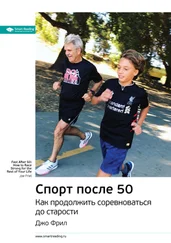LeMond, G., and K. Gordis. Greg LeMond’s Complete Book of Bicycling . New York: Perigee Books, 1988.
Lindsay, F. H., et al. Improved Athletic Performance in Highly Trained Cyclists after Interval Training // Medicine and Science in Sports and Exercise 28, no. 11 (1996): 1427–1434.
Loehr, James. Mental Toughness Training for Sports . Brattelboro, VT: Stephen Greene Press, 1982.
Loehr, James. The New Mental Toughness Training for Sports. New York: Penguin Books, 1995.
Loftin, M., and B. Warren. Comparison of a Simulated 16.1-km Time Trial, VO2Max and Related Factors in Cyclists with Different Ventilatory Thresholds // International Journal of Sports Medicine 15, no. 8 (1994): 498–503.
Luis, A., H. Joyes, and J. L. Chicharro. Physiological Response to Professional Road Cycling: Climbers vs. Time Trialists // International Journal of Sports Medicine 21 (2001): 505–512.
Lynch, Jerry. Creative Coaching . Champaign, IL: Human Kinetics, 2001.
Lynch, Jerry. Running Within . Champaign, IL: Human Kinetics, 1999.
Lynch, Jerry. Thinking Body, Dancing Mind . New York: Bantam Books, 1992.
Lynch, Jerry. The Total Runner . Englewood Cliffs, NJ: Prentice Hall, 1987.
Lynch, Jerry, and Chungliang Al Huang. Working Without, Working Within . New York: Tarcher and Putnam, 1998.
MacLaren, C. P., et al. A Review of Metabolic and Physiologic Factors in Fatigue // Exercise and Sports Science Review 17 (1989): 29.
Maglischo, E. Swimming Faster . Palo Alto, CA: Mayfield, 1982.
Marcinik, E. J., et al. Effects of Strength Training on Lactate Threshold and Endurance Performance // Medicine and Science in Sports and Exercise 23, no. 6 (1991): 739–743.
Martin, D. E., and P. N. Coe. Training Distance Runners . Champaign, IL: Leisure Press, 1991.
Massey, L. K., et al. Interactions between Dietary Caffeine and Calcium on Calcium and Bone Metabolism in Older Women // Journal of the American College of Nutrition 13 (1994): 592–596.
Matveyev, L. Fundamentals of Sports Training . Moscow: Progress Publishing, 1981.
Mayhew, J., and P. Gross. Body Composition Changes in Young Women and High Resistance Weight Training // Research Quarterly 45 (1974): 433–440.
McArdle, W. D., F. I. Katch, and V. L. Katch. Exercise Physiology. Baltimore: Williams and Wilkins, 1996.
McCarthy, J. P., et al. Compatibility of Adaptive Responses with Combining Strength and Endurance Training // Medicine and Science in Sports and Exercise 27, no. 3 (1995): 429–436.
McMurray, R. G., V. Ben-Ezra, W. A. Forsythe, and A. T. Smith. Responses of Endurance-Trained Subjects to Caloric Deficits Induced by Diet or Exercise // Medicine and Science in Sports and Exercise 17, no. 5 (1985): 574–579.
McMurtrey, J. J., and R. Sherwin. History, Pharmacology and Toxicology of Caffeine and Caffeine-Containing Beverages // Clinical Nutrition 6 (1987): 249–254.
Milne, C. The Tired Athlete // New Zealand Journal of Sports Medicine 19, no. 3 (1991): 42–44.
Mujika, I., and S. Padilla. Creatine Supplementation as an Ergogenic Aid for Sports Performance in Highly Trained Athletes: A Critical Review // International Journal of Sports Medicine 18, no. 7 (1997): 491–496.
Myburgh, K. H., et al. High-Intensity Training for 1 Month Improves Performance but Not Muscle Enzyme Activities in Highly Trained Cyclists // Medicine and Science in Sports and Exercise 27, no. 5 (1995): S370.
Nelson, A. G., et al. Consequences of Combining Strength and Endurance Training Regimens // Physical Therapy 70 (1990): 287–294.
Nelson, A. G., et al. Muscle Glycogen Supercompensation Is Enhanced by Prior Creatine Supplementation // Medicine and Science in Sports and Exercise 33, no. 7 (2001): 1096–1100.
Neufer, P. D., et al. Effects of Reduced Training on Muscular Strength and Endurance in Competitive Swimmers // Medicine and Science in Sports and Exercise 19 (1987): 486–490.
Newham, D. J., et al. Muscle Pain and Tenderness after Exercise // Australian Journal of Sports Medicine and Exercise Science 14 (1982): 129–131.
Nicholls, J. F., et al. Relationship between Blood Lactate Response to Exercise and Endurance Performance in Competitive Female Masters Cyclists // International Journal of Sports Medicine 18 (1997): 458–463.
Nieman, D. C., et al. Infectious Episodes in Runners before and after the Los Angeles Marathon // Journal of Sports Medicine and Physical Fitness 30 (1990): 316–338.
Niles, R. Power as a Determinant of Endurance Performance // Неопубликованное исследование, проведенное в Sonoma State University, 1991.
Noakes, T. D. Implications of Exercise Testing for Prediction of Athletic Performance: A Contemporary Perspective // Medicine and Science in Sports and Exercise 20, no. 4 (1988): 319–330.
O’Brien, C., et al. Glycerol Hyperhydration: Physiological Responses during Cold-Air Exposure // Journal of Applied Physiology 99 (2005): 515–521.
Okkels, T. The Effect of Interval and Tempo Training on Performance and Skeletal Muscle in Well-Trained Runners // Acoteias, Portugal: Twelfth European Track Coaches Congress (1983): 1–9.
Orlick, Terry. Psyched to Win . Champaign, IL: Leisure Press, 1992.
Orlick, Terry. Psyching for Sport . Champaign, IL: Leisure Press, 1986.
Parizkova, J. Body Composition and Exercise during Growth and Development // Physical Activity: Human Growth and Development (1974).
Pate, R. R., et al. Cardiorespiratory and Metabolic Responses to Submaximal and Maximal Exercise in Elite Women Distance Runners // International Journal of Sports Medicine 8, no. 2 (1987): 91–95.
Paton, C. D., and W. G. Hopkins. Combining Explosive and High-Resistance Training Improves Performance in Competitive Cyclists // Journal of Strength and Conditioning Research 19, no. 4 (2005): 826–830.
Peyrebrune, M. C., et al. The Effects of Oral Creatine Supplementation on Performance in Single and Repeated Sprint Training // Journal of Sports Science 16, no. 3 (1998): 271–279.
Phillips, S. M., et al. Mixed Muscle Protein Synthesis and Breakdown after Resistance Exercise in Humans // American Journal of Physiology 273, no. 1 (1997): E99–E107.
Phinney, D., and C. Carpenter. Training for Cycling . New York: Putnam, 1992.
Piatti, P. M., F. Monti, and I. Fermo, et al. Hypocaloric, High-Protein Diet Improves Glucose Oxidation and Spares Lean Body Mass: Comparison to Hypocaloric, High Carbohydrate Diet // Metabolism 43, no. 12 (1994): 1481–1487.
Pollock, M., et al. Effect of Age and Training on Aerobic Capacity and Body Composition of Master Athletes // Journal of Applied Physiology 62, no. 2 (1987): 725–731.
Pollock, M., et al. Frequency of Training as a Determinant for Improvement in Cardiovascular Function and Body Composition of Middle-Aged Men // Archives of Physical Medicine and Rehabilitation 56 (1975): 141–145.
Pompcu, F. A., et al. Prediction of Performance in the 5000m Run by Means of Laboratory and Field Tests in Male Distance Runners // Medicine and Science in Sports and Exercise 28, no. 5 (1996): S89.
Poole, D. C., et al. Determinants of Oxygen Uptake // Sports Medicine 24 (1996): 308–320.
Rankin, J. W. Weight Loss and Gain in Athletes // Current Sports Medicine Reports 1, no. 4 (2002): 208–213.
Rasmussen, B. B., et al. An Oral Essential Amino Acid – Carbohydrate Supplement Enhances Muscle Protein Anabolism after Resistance Exercise // Journal of Applied Physiology 88, no. 2 (2000): 386–392.
Читать дальше
Конец ознакомительного отрывка
Купить книгу
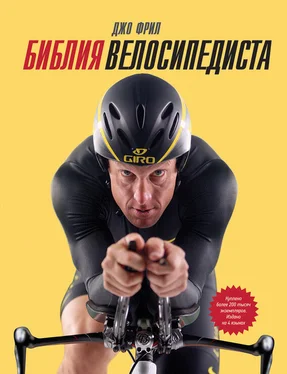
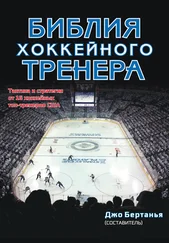
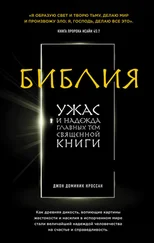
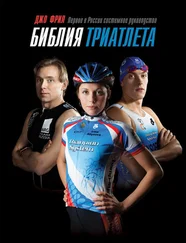



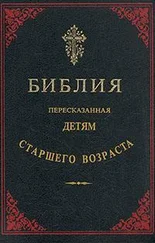

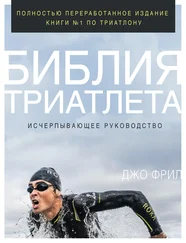
![Библия - Библия [Учебное издание]](/books/433190/bibliya-bibliya-uchebnoe-izdanie-thumb.webp)
